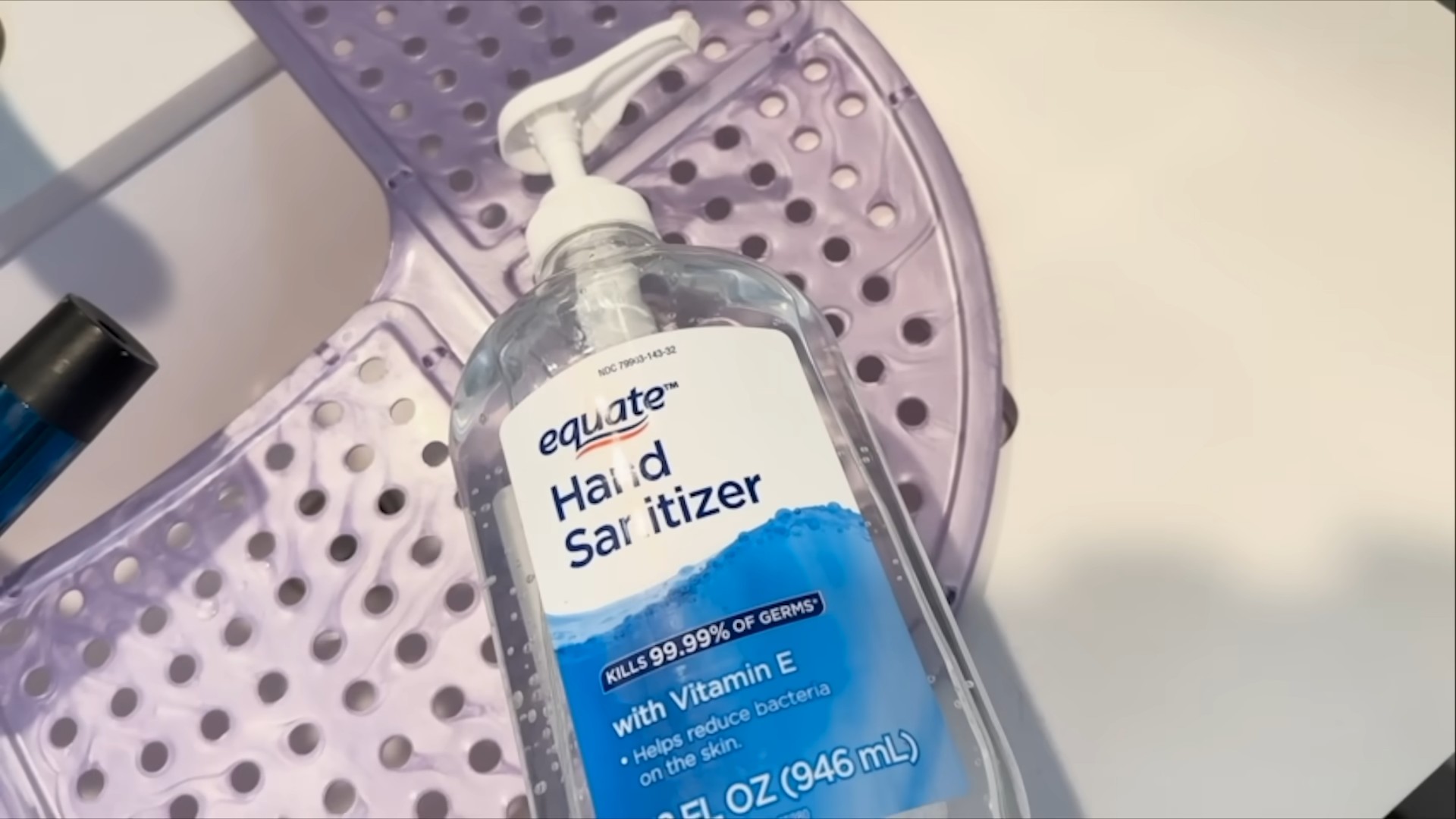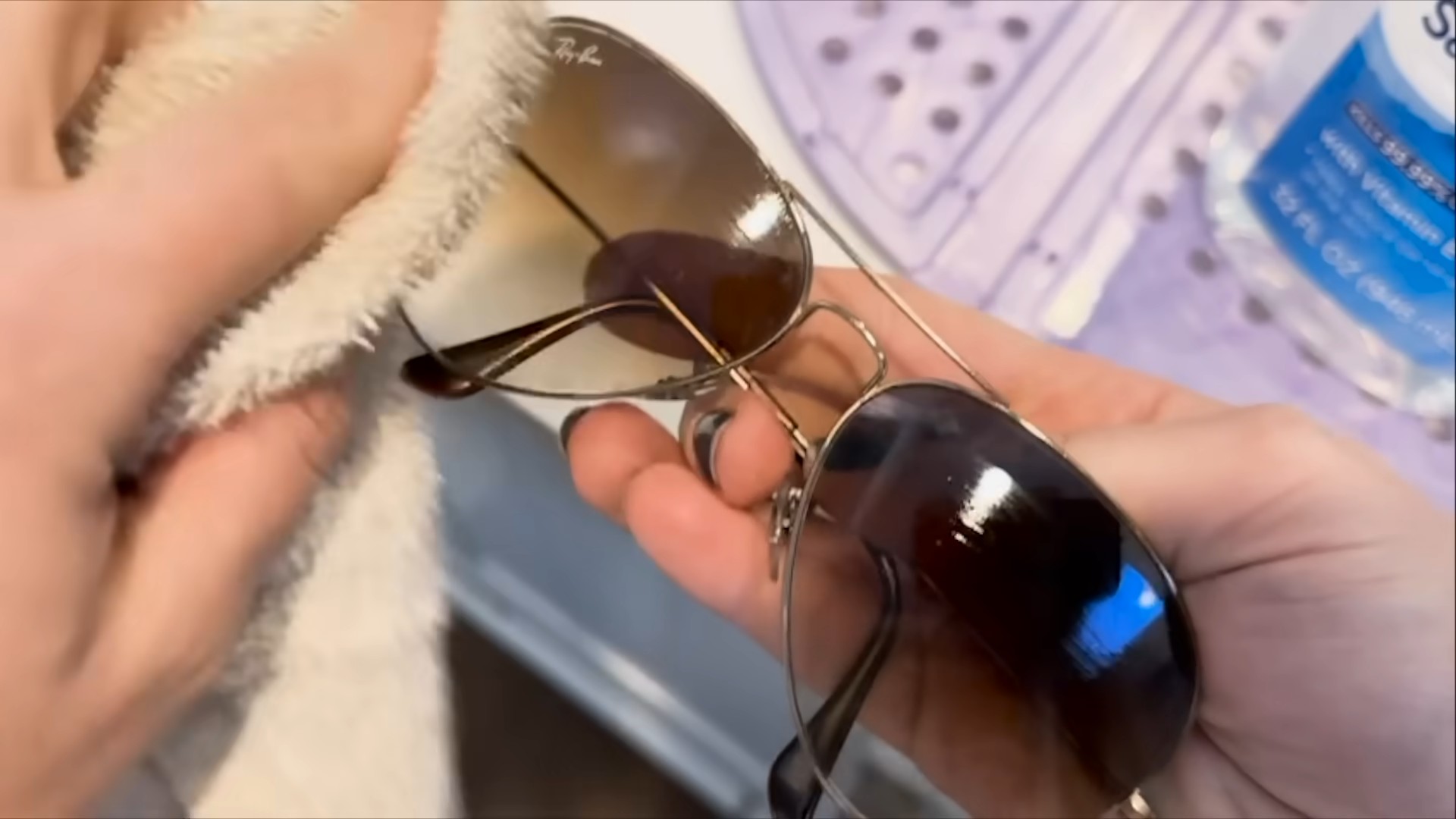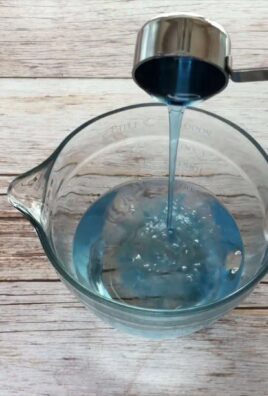Hand sanitizer cleaning hacks – who knew those little bottles of germ-fighting goodness could do so much more than just keep our hands clean? I’m constantly amazed by the hidden potential in everyday items, and hand sanitizer is definitely one of them!
For years, hand sanitizer has been a staple in our bags and pockets, especially since the recent pandemic, a symbol of cleanliness and safety. But its alcohol-based formula, originally developed for medical settings, possesses surprising cleaning power that extends far beyond sanitizing our hands. Think of it as a mini-magic potion ready to tackle unexpected messes around your home.
Let’s face it, life gets messy! From sticky residue to stubborn stains, we’re constantly battling grime. But who has the time (or the budget) for a cabinet full of specialized cleaning products? That’s where these hand sanitizer cleaning hacks come in. I’m going to show you how to simplify your cleaning routine, save money, and discover the surprising versatility of this everyday essential. Get ready to unlock a whole new level of clean with these easy and effective DIY tricks!

Hand Sanitizer: Your Unexpected Cleaning Superhero!
Hey everyone! I’m so excited to share some of my favorite cleaning hacks using something we all have lying around: hand sanitizer! Yes, you read that right. That little bottle of germ-killing goodness can do so much more than just clean your hands. I’ve discovered some amazing uses for it around the house, and I can’t wait to share them with you. Get ready to be amazed!
Why Hand Sanitizer Works as a Cleaner
Before we dive into the hacks, let’s quickly understand why hand sanitizer is surprisingly effective as a cleaner. The high alcohol content (usually 60-95% ethanol or isopropyl alcohol) is the key. Alcohol is a fantastic solvent, meaning it can dissolve and lift away grime, grease, and even some sticky residues. Plus, it evaporates quickly, leaving surfaces clean and dry.
General Tips Before You Start
* Test First: Always test hand sanitizer on an inconspicuous area before applying it to the entire surface, especially on delicate materials like leather or painted surfaces. You want to make sure it doesn’t cause any discoloration or damage.
* Ventilation is Key: Work in a well-ventilated area when using hand sanitizer, as the alcohol fumes can be strong.
* Use Sparingly: A little goes a long way! You don’t need to saturate the surface.
* Safety First: Keep hand sanitizer away from heat and flames, as it’s flammable. And, of course, keep it out of reach of children and pets.
Hack 1: Removing Sticky Residue
Ugh, sticky residue. It’s the bane of my existence! Whether it’s from price tags, tape, or spilled syrup, it’s just so annoying to get rid of. But guess what? Hand sanitizer is my secret weapon!
What You’ll Need:
* Hand sanitizer
* A clean cloth or paper towel
Step-by-Step Instructions:
1. Apply Hand Sanitizer: Squirt a small amount of hand sanitizer directly onto the sticky residue. Make sure you cover the entire area.
2. Let it Sit: Allow the hand sanitizer to sit for a minute or two. This gives the alcohol time to break down the adhesive.
3. Wipe Away: Using a clean cloth or paper towel, gently wipe away the residue. You might need to apply a little pressure, but avoid scrubbing too hard, especially on delicate surfaces.
4. Repeat if Necessary: If the residue is particularly stubborn, you might need to repeat the process.
5. Clean the Surface: Once the residue is gone, wipe the area with a damp cloth to remove any remaining hand sanitizer.
I’ve used this trick on everything from removing price tags from glassware to cleaning up sticky spills on my kitchen counter. It works like a charm!
Hack 2: Cleaning Your Phone Screen
Our phones are germ magnets! We touch them constantly, and they’re always exposed to dirt and grime. Hand sanitizer is a quick and easy way to keep your phone screen clean and sanitized.
What You’ll Need:
* Hand sanitizer (gel or spray)
* A microfiber cloth
Step-by-Step Instructions:
1. Power Off Your Phone: This is important! You don’t want to accidentally activate anything while you’re cleaning.
2. Apply Hand Sanitizer: Apply a very small amount of hand sanitizer to the microfiber cloth. I prefer to use a spray hand sanitizer for this, as it’s easier to control the amount. If you’re using gel, make sure you only use a tiny dab.
3. Wipe the Screen: Gently wipe the screen with the microfiber cloth, making sure to cover the entire surface. Avoid getting any liquid into the ports or openings of your phone.
4. Dry the Screen: Use a clean, dry section of the microfiber cloth to dry the screen.
5. Power On Your Phone: Once the screen is completely dry, you can power your phone back on.
Important Note: Avoid using hand sanitizer with added moisturizers or fragrances, as these can leave a residue on your screen.
Hack 3: Shining Chrome Fixtures
Want to give your chrome fixtures a quick shine? Hand sanitizer can do the trick! It’s a great way to remove water spots and fingerprints.
What You’ll Need:
* Hand sanitizer
* A clean cloth
Step-by-Step Instructions:
1. Apply Hand Sanitizer: Apply a small amount of hand sanitizer directly to the chrome fixture.
2. Wipe and Polish: Use a clean cloth to wipe the fixture, buffing it gently to remove water spots and fingerprints.
3. Admire the Shine: That’s it! Your chrome fixtures should now be sparkling clean.
I use this hack on my bathroom faucets and showerhead, and it makes a noticeable difference.
Hack 4: Removing Ink Stains
Accidentally got ink on your hands or clothes? Don’t panic! Hand sanitizer can help.
What You’ll Need:
* Hand sanitizer
* A clean cloth or paper towel
* Water
For Skin:
1. Apply Hand Sanitizer: Apply a generous amount of hand sanitizer to the ink stain.
2. Rub and Rinse: Rub the hand sanitizer into the stain for a few seconds, then rinse with water.
3. Repeat if Necessary: You might need to repeat this process a few times to completely remove the ink.
For Clothes:
1. Test First: As always, test the hand sanitizer on an inconspicuous area of the fabric first to make sure it doesn’t cause any discoloration.
2. Apply Hand Sanitizer: Apply hand sanitizer directly to the ink stain.
3. Blot the Stain: Use a clean cloth or paper towel to blot the stain, working from the outside in. Avoid rubbing, as this can spread the stain.
4. Rinse with Water: Rinse the stained area with water.
5. Launder as Usual: Launder the garment as usual.
Important Note: This hack works best on fresh ink stains. Older stains might be more difficult to remove.
Hack 5: Deodorizing Shoes
Smelly shoes? Hand sanitizer to the rescue! The alcohol in hand sanitizer can kill odor-causing bacteria.
What You’ll Need:
* Hand sanitizer (spray is best)
Step-by-Step Instructions:
1. Spray the Inside of the Shoes: Spray a generous amount of hand sanitizer inside the shoes, making sure to cover the entire surface.
2. Let Them Dry: Allow the shoes to air dry completely before wearing them.
I like to do this after a workout or a long day on my feet. It really helps to keep my shoes smelling fresh.
Hack 6: Cleaning Eyeglasses
Just like our phone screens, our eyeglasses can get dirty and smudged easily. Hand sanitizer is a quick and convenient way to clean them.
What You’ll Need:
* Hand sanitizer (gel or spray)
* A microfiber cloth
Step-by-Step Instructions:
1. Apply Hand Sanitizer: Apply a very small amount of hand sanitizer to the microfiber cloth.
2. Wipe the Lenses: Gently wipe the lenses with the microfiber cloth, making sure to cover the entire surface.
3. Dry the Lenses: Use a clean, dry section of the microfiber cloth to dry the lenses.
Important Note: Avoid using hand sanitizer with added moisturizers or fragrances, as these can leave a residue on your lenses.
Hack 7: Removing Hairspray Buildup from Styling Tools
Hairspray can leave a sticky residue on your styling tools like curling irons and flat irons. Hand sanitizer can help remove this buildup.
What You’ll Need:
* Hand sanitizer
* A clean cloth
Step-by-Step Instructions:
1. Unplug the Styling Tool: Make sure the styling tool is unplugged and completely cool before cleaning it.
2. Apply Hand Sanitizer: Apply a small amount of hand sanitizer to the clean cloth.
3. Wipe the Styling Tool: Gently wipe the styling tool with the cloth, removing the hairspray buildup.
4. Dry the Styling Tool: Use a clean, dry section of the cloth to dry the styling tool.
This will help keep your styling tools clean and working properly.
Hack 8: Cleaning Your Car’s Steering Wheel
Think about how many germs are on your car’s steering wheel! Hand sanitizer is a quick and easy way to disinfect it.
What You’ll Need:
* Hand sanitizer
* A clean cloth
Step-by-Step Instructions:
1. Apply Hand Sanitizer: Apply

Conclusion
So, there you have it! Transforming your humble bottle of hand sanitizer into a powerhouse cleaning agent is not just a clever hack; it’s a game-changer for maintaining a sparkling and germ-free home. We’ve explored a range of applications, from banishing stubborn stains to revitalizing everyday surfaces, all thanks to the potent properties of this readily available product.
Why is this DIY trick a must-try? Because it’s efficient, economical, and surprisingly effective. In a world where we’re constantly seeking ways to simplify our lives and reduce our reliance on harsh chemicals, this hand sanitizer cleaning hack offers a refreshing alternative. It’s a testament to the fact that sometimes, the most ingenious solutions are right under our noses. Plus, think of the satisfaction you’ll get from repurposing something you already have!
But the beauty of this hack lies not only in its simplicity but also in its versatility. Feel free to experiment with different variations to suit your specific needs and preferences. For instance, if you’re tackling particularly stubborn grime, consider adding a few drops of essential oil, like lemon or tea tree, for an extra boost of cleaning power and a pleasant fragrance. Or, if you’re concerned about the alcohol content affecting delicate surfaces, dilute the hand sanitizer with water to create a gentler cleaning solution.
Don’t be afraid to get creative and customize this hack to fit your unique cleaning challenges.
We’ve covered a lot of ground, from shining stainless steel to disinfecting doorknobs, but the possibilities are truly endless. The key is to start small, test the solution on an inconspicuous area first, and adjust the concentration as needed. Remember, a little hand sanitizer can go a long way!
Now, it’s your turn to put this knowledge into practice. We wholeheartedly encourage you to try these hand sanitizer cleaning hacks and discover the transformative power of this everyday essential. We’re confident that you’ll be amazed by the results.
But don’t just take our word for it. We want to hear about your experiences! Share your successes, your challenges, and your own unique variations in the comments below. Let’s create a community of cleaning enthusiasts who are passionate about finding innovative and sustainable solutions for a cleaner, healthier home.
Your feedback is invaluable, and we can all learn from each other’s experiences.
So, grab your bottle of hand sanitizer, roll up your sleeves, and get ready to unleash its hidden cleaning potential. We’re excited to see what you discover! Happy cleaning!
FAQ
What exactly makes hand sanitizer a good cleaning agent?
Hand sanitizer’s effectiveness as a cleaning agent stems primarily from its high alcohol content, typically ranging from 60% to 95%. This alcohol acts as a powerful disinfectant, effectively killing a wide range of bacteria, viruses, and fungi on contact. In addition to its antimicrobial properties, the alcohol also helps to dissolve grease and grime, making it easier to wipe away dirt and debris from surfaces. The other ingredients, like emollients, help to lift dirt and prevent the alcohol from drying out too quickly, giving it more time to work. However, it’s important to note that hand sanitizer is not a substitute for soap and water when it comes to removing visible dirt and grime. It’s best used for disinfecting surfaces after they’ve been cleaned.
Can I use any type of hand sanitizer for cleaning?
While most hand sanitizers will work for cleaning purposes, it’s best to opt for those with a higher alcohol content (at least 60%) for optimal disinfection. Avoid using hand sanitizers that contain added fragrances, dyes, or moisturizers, as these ingredients can leave behind a residue on surfaces. Gel-based hand sanitizers tend to be more effective for cleaning than foam-based ones, as they provide better coverage and stay in contact with the surface longer. Always check the ingredient list before using hand sanitizer for cleaning to ensure that it doesn’t contain any ingredients that could damage or discolor the surface you’re cleaning.
Are there any surfaces I should avoid cleaning with hand sanitizer?
While hand sanitizer is generally safe for use on most surfaces, there are a few exceptions to keep in mind. Avoid using it on delicate or porous materials, such as unfinished wood, leather, or suede, as the alcohol can dry them out or cause discoloration. It’s also best to avoid using hand sanitizer on painted surfaces, as the alcohol can strip away the paint or leave behind a dull finish. When in doubt, always test the hand sanitizer on an inconspicuous area first to ensure that it doesn’t cause any damage or discoloration. Also, avoid using it on screens of electronics, as it can damage the anti-glare coating.
Will hand sanitizer damage my stainless steel appliances?
No, hand sanitizer is generally safe to use on stainless steel appliances. In fact, it can be quite effective at removing fingerprints, smudges, and water spots, leaving your appliances looking shiny and new. However, it’s important to use a clean, soft cloth to wipe the surface after applying the hand sanitizer to prevent streaks. Avoid using abrasive cleaners or scouring pads, as these can scratch the stainless steel. For best results, apply a small amount of hand sanitizer to a cloth and gently wipe the surface in the direction of the grain.
Can I use hand sanitizer to clean my phone screen?
While some people use hand sanitizer to clean their phone screens, it’s generally not recommended. The alcohol in hand sanitizer can damage the oleophobic coating on your phone screen, which is designed to repel fingerprints and smudges. Over time, using hand sanitizer to clean your phone screen can cause the coating to wear away, making your screen more susceptible to scratches and smudges. Instead, opt for a microfiber cloth or a screen cleaner specifically designed for electronic devices.
Is it safe to use hand sanitizer to clean food preparation surfaces?
While hand sanitizer can be used to disinfect food preparation surfaces, it’s important to take precautions to ensure that it doesn’t contaminate your food. After disinfecting the surface with hand sanitizer, be sure to wipe it down thoroughly with a clean, damp cloth to remove any residue. Allow the surface to air dry completely before placing any food on it. It’s also important to note that hand sanitizer is not a substitute for proper food safety practices, such as washing your hands thoroughly with soap and water before handling food.
How can I make a diluted hand sanitizer cleaning solution?
To make a diluted hand sanitizer cleaning solution, simply mix equal parts hand sanitizer and water in a spray bottle. For example, you could mix 1/2 cup of hand sanitizer with 1/2 cup of water. Shake the bottle well to combine the ingredients. This diluted solution is gentler than undiluted hand sanitizer and can be used on more delicate surfaces. However, it may not be as effective at disinfecting as undiluted hand sanitizer.
What essential oils can I add to hand sanitizer for extra cleaning power?
Several essential oils have antimicrobial properties that can enhance the cleaning power of hand sanitizer. Some popular choices include tea tree oil, lemon oil, eucalyptus oil, and lavender oil. When adding essential oils to hand sanitizer, use them sparingly, as they can be quite potent. A few drops of essential oil per ounce of hand sanitizer is usually sufficient. Be sure to choose high-quality, pure essential oils for best results. Also, be aware of any potential allergies or sensitivities to essential oils before using them.
How do I store my homemade hand sanitizer cleaning solution?
Store your homemade hand sanitizer cleaning solution in a cool, dark place away from direct sunlight and heat. A spray bottle is the ideal container for storing the solution, as it allows for easy application. Be sure to label the bottle clearly to avoid confusion. The solution should be stable for several weeks, but it’s best to use it within a month for optimal effectiveness. If you notice any changes in the appearance or odor of the solution, discard it.




Leave a Comment